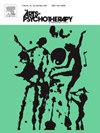draw:用于艺术治疗培训和实践的文档模型
IF 1.5
3区 心理学
Q3 PSYCHOLOGY, CLINICAL
引用次数: 0
摘要
有效的治疗需要完整的文件。现有的文档实践在适应于表达性帮助职业时可能会受到限制。艺术治疗不同于口头干预,它包含了传统心理治疗文件格式可能无法捕捉到的艺术成分。好的文档必须捕捉到这些组成部分,包括材料的选择,从多个角度解释艺术,以及客户对指令的反应。draw是一种标准化的笔记格式,旨在帮助艺术治疗师和学员学习如何记录和组织独特的创作过程的临床信息。它包括d -描述,r -审查,a -评估在会议中制作的艺术,以及w -对艺术重要的其他元素,以及s -总结会议。DRAWS结合了当前的研究和文献元素的艺术治疗实践已被确定为至关重要的,也可用于交流信息。本文章由计算机程序翻译,如有差异,请以英文原文为准。
DRAWS: A documentation model for use in art therapy training and practice
Effective treatment requires thorough documentation. Existing documentation practices may be limited when adapted to expressive helping professions. Art therapy, unlike verbal interventions, includes artistic components that traditional psychotherapy documentation formats may not capture. Good documentation must capture these components, including the selection of materials, interpretation of art from multiple perspectives, and the client’s response to directives. DRAWS is a standardized note-taking format designed to aid art therapists and trainees in learning how to record and organize clinical information unique to the creative process. It includes D-Describing, R-Reviewing, A-Assessing art made in session, as well as W-What other elements are important to the art, and S-Summarizing the session. DRAWS incorporates current research and documents elements of art therapy practice that have been identified as crucial, and may also be used to communicate information.
求助全文
通过发布文献求助,成功后即可免费获取论文全文。
去求助
来源期刊

Arts in Psychotherapy
Multiple-
CiteScore
3.20
自引率
11.10%
发文量
66
期刊介绍:
The Arts in Psychotherapy is a dynamic, contemporary journal publishing evidence-based research, expert opinion, theoretical positions, and case material on a wide range of topics intersecting the fields of mental health and creative arts therapies. It is an international peer-reviewed journal publishing 5 issues annually. Papers are welcomed from researchers and practitioners in the fields of art, dance/movement, drama, music, and poetry psychotherapy, as well as expressive and creative arts therapy, neuroscience, psychiatry, education, allied health, and psychology that aim to engage high level theoretical concepts with the rigor of professional practice. The journal welcomes contributions that present new and emergent knowledge about the role of the arts in healthcare, and engage a critical discourse relevant to an international readership that can inform the development of new services and the refinement of existing policies and practices. There is no restriction on research methods and review papers are welcome. From time to time the journal publishes special issues on topics warranting a distinctive focus relevant to the stated goals and scope of the publication.
 求助内容:
求助内容: 应助结果提醒方式:
应助结果提醒方式:


